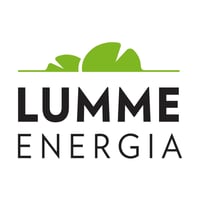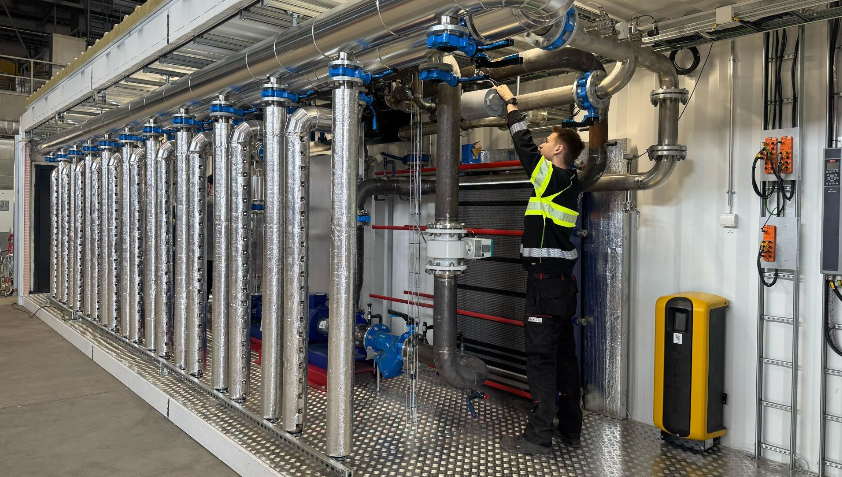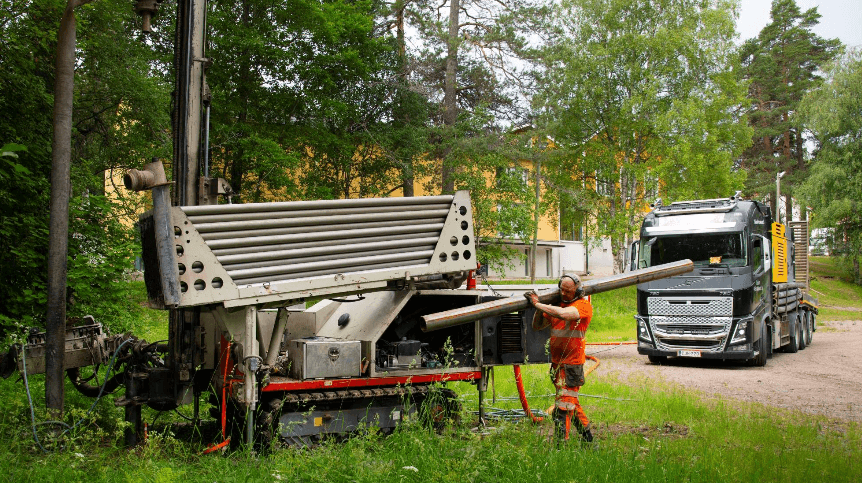Energy Manager's Electricity Portfolio and Participation in Reserve Markets Enhance HeatChain's Profitability


HeatChain Oy offers fossil-free district heating as a service. Transitioning from separate electricity contracts to an electricity portfolio enabled the company to achieve stable and profitable production, while participation in reserve markets brings additional income.
HeatChain produces district heating by utilizing heat pumps and server waste heat. Moreover, the company constructs its own modular data heat plants for other district heating companies and operates them.
When HeatChain began operations in the summer of 2023, it operated according to spot electricity prices.
"We optimized operations so that we reduced heat production when electricity prices were high and aimed to produce heat at full capacity when electricity was cheap. However, the heat production profile was quite difficult to predict," says HeatChain's CEO, Petteri Hajanti.
Therefore, in 2024, HeatChain sought a partner to avoid being at the mercy of weather-dependent electricity prices and to diversify its business. Implementing price hedging through portfolio management services and participate in reserve markets was the right answer for HeatChain's questions.
Lumme Energia was there to meet HeatChain's needs. On the recommendation of Lumme Energia's portfolio managers, price hedging has now been arranged until the end of 2026.
"Now we can produce district heating year-round without significant electricity price risks, even if a nuclear power plant is temporarily out of service and spot prices rise."
– Petteri Hajanti, HeatChain
According to Hajanti, the difference compared to the previous winter has been clear: this winter, they were able to produce more district heating with a very good utilization rate throughout the heating season. For heat customers, this means that an increasing portion of district heating is produced emission-free. HeatChain purchases fossil-free electricity with guarantees of origin from Lumme Energia.
Lumme Energia's portfolio management is part of the Energy Manager service package designed for larger companies.
Waste Heat is a Sustainable Way to Produce District Heating
It is crucial to reduce emissions from energy production, and it's sensible to utilize heat that would otherwise go to waste. Therefore, leveraging data center waste heat is a timely topic. According to Hajanti, data centers waste heat has been underutilized despite to its potential until the early 2020s.
"The problem has been sufficient economic viability from both the data center and the heat users' perspectives. Investments in heat recovery infrastructure are relatively large, and waste heat becomes available only when the data center operates at a sufficiently large capacity," Hajanti explains.
Data centers heat recovery projects have increased in recent years. According to Hajanti, this development is significantly due to data centers being eligible for a reduced electricity tax class since the beginning of 2022 if sufficient waste heat is recovered. Additionally, heat recovery is strongly considered in the planning of new data center projects.
Hajanti believes it's critical that waste heat is considered when the government contemplates changes to data center electricity taxation.
"This ensures the economic viability of waste heat utilization in the future and doesn't halt the positive development that reduces emissions and price pressure in district heating production," says Hajanti.
Through Demand Response and Reserve Markets, HeatChain Also Participates in Responsible Energy Use
Most data centers can, if desired, engage in demand response in electricity markets. Demand response involves limiting electricity use and shifting it from periods of high consumption and prices to more affordable times. As a result, during periods of high demand, less fossil fuel is needed to meet energy needs.
HeatChain offers demand response to the electricity market in six-hour block offers.
"We offer the electricity market the ability to reduce our production facilities' electricity use by a predetermined amount during a specific period," Hajanti explains.
The company receives financial compensation for activated demand response, so demand response can also reduce overall energy costs.
"During the first two weeks of operation, there were several activations due to nuclear power plant maintenance, and we received reasonable financial compensation for the use of our reserve resources," Hajanti reports.
Lumme Energia's sustainability specialist, Katariina Koistinen, praises demand response services as they bring about both environmental and economic value.

"This way, market mechanisms are harnessed for sustainability. When a company participates in demand response, it achieves significant cost savings, but at the same time, it promotes the clean transition by shifting electricity consumption to cleaner energy periods," Koistinen explains.
In the Energy Manager service, demand response can be utilized through the Optimization Service.
The Energy Manager Portal Provides a Comprehensive View of Energy Management and the Electricity Portfolio
The Energy Manager is designed as a comprehensive solution for a companies' energy management, as the name suggests. Energy management is made simple for the business customers in the designated Energy Manager portal.
Hajanti says that from the Energy Manager portal, he can easily download monitoring reports to support management's decision-making. For example, the success of price hedging is always of interest, as are the financial benefits realized through active electricity market participation.
The Energy Manager is suitable for companies for whom energy is more than just a competitive electricity contract: expert services, cost and consumption optimization, and, of course, sustainability.
Koistinen also states that the Energy Manager has been developed with the aim of benefiting both the planet and companies' finances.
"Every feature in the Energy Manager portal has the potential to support more responsible energy use," Koistinen describes.
Hajanti reports that as the whole company, they have learned much about how electricity markets operate. Interest is no longer limited to, for example, fluctuations in spot electricity prices. Instead, through the partnership with Lumme Energia, HeatChain understands the opportunities of electricity markets more deeply.
Now we can produce district heating year-round without significant electricity price risks, even if a nuclear power plant is temporarily out of service and spot prices rise."
– Petteri Hajanti, HeatChain
%20kopio.jpg?width=2000&height=1333&name=Energiajohtaja-portaali-kuva2%20(1)%20kopio.jpg)
Would the Energy Manager service be a suitable solution for your business? Feel free to contact us at yritysmyynti@lumme-energia.fi to discuss your needs in more detail!



